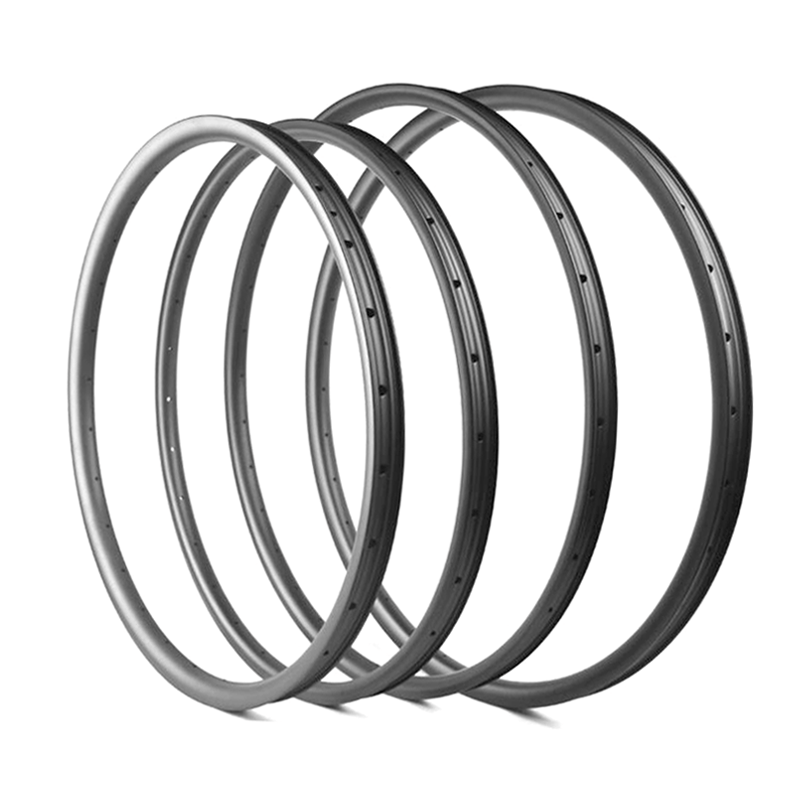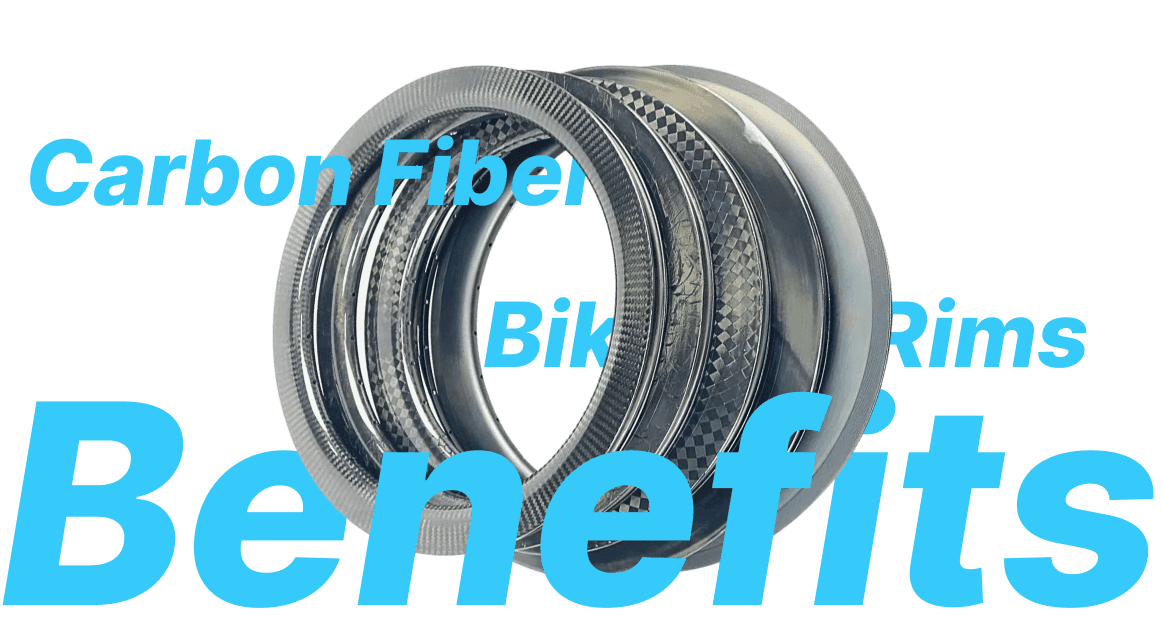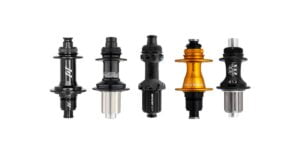As the cycling industry continues to evolve, bike shop owners and manufacturers must stay ahead of the curve to meet the changing needs of cyclists. One key area where innovation is taking place is in the production of bike rims, particularly carbon fiber bike rims. This guide aims to provide an in-depth understanding of carbon fiber bike rims, their advantages, market dynamics, and how they can enhance your brand’s position in the competitive cycling landscape.

What Are Carbon Fiber Bike Rims?
Carbon fiber bike rims are made from a composite material consisting of carbon fibers and resin. This combination results in a lightweight yet strong material that has revolutionized the cycling industry. Unlike traditional aluminum rims, carbon fiber rims are engineered for performance, providing a unique riding experience that appeals to serious cyclists and competitive racers alike. The construction process often involves layering carbon sheets in a mold, creating a custom shape that can be optimized for aerodynamics and stiffness.
These rims are not just a passing trend; they represent a significant advancement in bicycle technology. Their unique properties offer a range of benefits that can enhance both the ride quality and the overall experience for cyclists, making them a compelling choice for both manufacturers and consumers.
Why Choose Carbon Fiber Over Aluminum and Other Materials?
When comparing carbon fiber to aluminum, one of the most significant differences lies in weight. Carbon fiber rims are generally lighter than their aluminum counterparts, allowing for faster acceleration and improved climbing. This weight advantage is particularly crucial for competitive cyclists looking to shave off precious seconds during races.
Additionally, carbon fiber offers superior stiffness and strength-to-weight ratios. This means that carbon rims can be designed to withstand greater forces without adding extra weight. Cyclists often report a noticeable difference in ride quality, with carbon fiber providing better shock absorption and vibration damping, leading to a smoother ride on rough surfaces.
The Value of Carbon Fiber Bike Rims
Enhanced Performance and Speed
One of the primary reasons cyclists opt for carbon fiber rims is the enhanced performance they offer. The lightweight nature of carbon fiber allows for quicker speeds and agile handling, which is essential for competitive cycling. Additionally, carbon rims are often designed with aerodynamics in mind, featuring shapes that minimize drag and improve airflow. These design features can lead to significant gains in speed, especially on flat courses.
Furthermore, carbon fiber rims can be tailored to specific riding styles and conditions, meaning that cyclists can find wheels that suit their needs, whether it’s climbing steep hills or maintaining speed on descents. This customization is a major selling point for high-performance cyclists who are willing to invest in equipment that will help them perform at their best.
Weight Savings and Ride Quality
The weight savings provided by carbon fiber rims is not just about speed; it also contributes to an improved ride quality. A lighter bike is easier to maneuver, which translates to better handling and less fatigue during longer rides. Cyclists often find that they can ride longer distances with less effort when using carbon fiber components.
Moreover, the inherent properties of carbon fiber allow for better vibration dampening, which enhances overall comfort. Riders are less likely to feel the impacts of road imperfections, making for a more enjoyable experience. This aspect is particularly appealing for endurance cyclists who spend extended periods on their bikes.
Understanding the Market Demand
Trends in the Cycling Industry
The cycling industry has witnessed a growing trend towards high-performance materials, with carbon fiber leading the charge. This shift is largely driven by consumer demand for better technology and performance. More cyclists are becoming aware of the benefits of carbon fiber, especially as advancements in manufacturing make these products more accessible.
Additionally, the rise of e-bikes and gravel bikes has expanded the market for carbon fiber rims. These bikes often require specialized components that can handle diverse conditions, and carbon fiber’s versatility makes it an attractive option. The demand for lightweight, durable components is only expected to grow, making it imperative for bike shops to consider incorporating carbon fiber rims into their offerings.
Target Audience Insights
Understanding the target audience is crucial for bike shop owners and manufacturers looking to capitalize on the carbon fiber trend. The primary consumers of carbon fiber bike rims are performance-oriented cyclists, including road racers, triathletes, and enthusiastic mountain bikers. These cyclists are often willing to invest significantly in high-quality gear that enhances their riding experience and performance.
The demographic is typically younger, with a focus on individuals who are engaged with technology and the latest cycling trends. They often share their experiences on social media and other platforms, making them influential in driving brand awareness and product selection. Thus, targeting marketing efforts towards this audience can yield substantial returns.
How Carbon Fiber Bike Rims Can Elevate Your Brand
Attracting High-End Customers
Offering carbon fiber bike rims can position your brand as a leader in quality and innovation. High-performance cyclists are always on the lookout for the best equipment, and by providing top-of-the-line carbon rims, you can cater to this market segment. This offers a pathway to attract high-end customers who are willing to pay a premium for performance enhancements.
Furthermore, the association with carbon fiber adds an element of prestige to your brand. Cyclists often seek the latest technology and are influenced by brands that are perceived as premium or cutting-edge. By aligning your products with this material, you can create a perception of luxury and high performance that resonates with serious riders.
Building a Reputation for Quality
In a competitive market, building a reputation for quality can set your business apart. Carbon fiber bike rims are synonymous with advanced engineering and attention to detail. By focusing on the quality of your offerings, you not only satisfy your customers’ needs but also foster loyalty and repeat business.
Positive customer experiences can lead to word-of-mouth referrals, which are invaluable in maintaining a strong customer base. Engaging with the cycling community, showcasing customer testimonials, and demonstrating the performance of your products can further enhance your brand reputation.
Generating Leads and Sales
Effective Marketing Strategies for Carbon Fiber Bike Rims
To successfully market carbon fiber bike rims, a multi-faceted approach is essential. Effective marketing strategies should include targeted advertising, engaging content creation, and leveraging influencer partnerships. Building a strong online presence through informative blog posts and videos that showcase the benefits and features of carbon fiber rims can attract potential customers.
Additionally, running targeted ad campaigns on platforms frequented by cyclists, such as Instagram and Facebook, can help reach your desired audience. Highlighting success stories, like race achievements or endurance records made possible by your products, can create a compelling narrative that draws interest.
Leveraging Social Media and Online Platforms
Social media is a powerful tool for promoting carbon fiber bike rims. Engaging with your audience through posts, stories, and live videos can create a community around your brand. Sharing user-generated content, such as photos and reviews from satisfied customers, can enhance credibility and encourage others to consider your products.
Moreover, utilizing platforms like YouTube for detailed product reviews and comparisons can help potential customers make informed decisions. Crafting content that addresses common concerns or questions about carbon fiber rims can position your brand as an authority in the field, further driving engagement and sales.
Conclusion
Carbon fiber bike rims represent a significant advancement in cycling technology, offering numerous benefits such as enhanced performance, weight savings, and improved ride quality. With the growing demand for high-performance cycling equipment, there is an opportunity for bike shop owners and manufacturers to capitalize on this trend.
By understanding market dynamics, targeting the right audience, and implementing effective marketing strategies, you can elevate your brand and attract customers who seek the best in cycling technology. Whether you are looking to enhance your product offerings or build a reputation for quality, carbon fiber bike rims can be a game-changer in the cycling industry.
FAQs
What are the main advantages of carbon fiber bike rims?
Carbon fiber bike rims are lighter, stiffer, and provide better shock absorption compared to aluminum. They enhance performance, speed, and ride quality, making them ideal for serious cyclists.
Are carbon fiber bike rims worth the investment?
Yes, for competitive cyclists and serious enthusiasts, the performance benefits and durability of carbon fiber rims can justify the higher price point compared to aluminum rims.
How do I choose the right carbon fiber rims for my bike?
Consider your cycling style, the terrain you ride on, and your performance goals. It’s essential to select rims that suit your specific needs, whether for road racing, mountain biking, or endurance cycling.
Can carbon fiber rims be repaired if damaged?
While some damage may be repairable, carbon fiber rims are generally less forgiving than aluminum. It is crucial to assess the damage and consult with professionals to determine the best course of action.
What maintenance do carbon fiber rims require?
Carbon fiber rims require minimal maintenance. It’s essential to keep them clean and regularly inspect for any signs of damage. Ensure that the braking surface is properly maintained for optimal performance.





